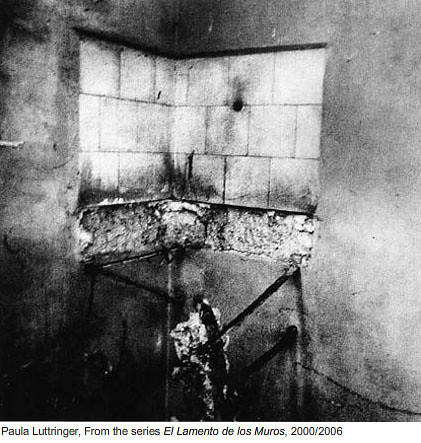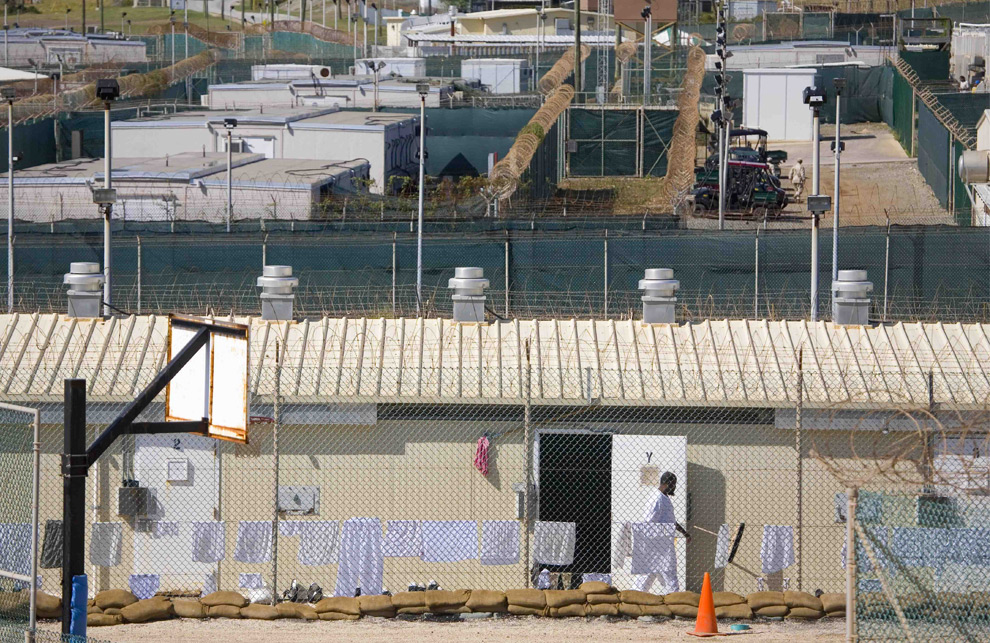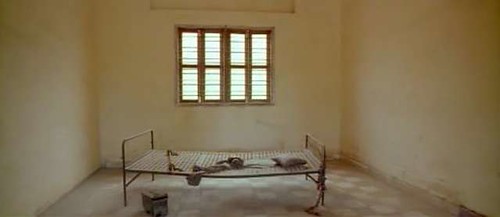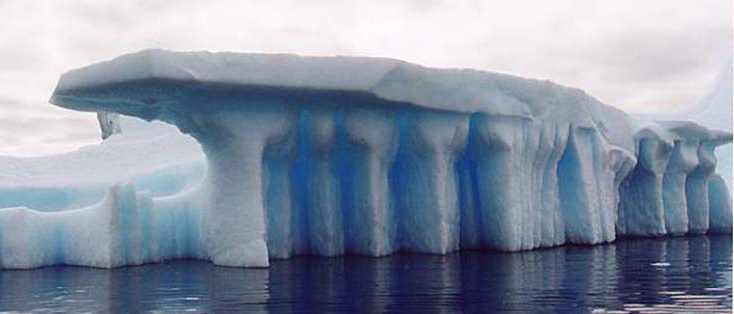The Spatial Instrumentality of Torture: An Interview with Tom Hilde

[Image: Segregation cells, Camp Remembrance, Abu Ghraib prison, Iraq, Photo bt Richard Ross.]
It’s no secret Subtopia is greatly concerned with the issue of torture and the movements towards its abolition, but not just the idea of torture or even its practice, but specifically the spatial production of it. If torture exists as a space, then what space, and why? How do these spaces come to exist and consort with the politics of secrecy that shield and justify torture, and how do those same legal qualifications seek out space, or provide a means for space to constitute itself whereby torture can perform its function? What are the functions of torture anyway, and how have they changed over time, for what purposes? Which comes first today, the legal arguments which help to justify torture, or the furtive spaces that allow torture to persist despite its illegality? More importantly, what does torture space mean for the landscape of neoliberal Empire and how can a deeper spatial examination of torture help expose the hypocritical logic of the democratic ideals and economic order which must assume responsibility for it? Could the closure of Guantánamo actually abet in the future practice of torture?
Well, a friend of ours Tom Hilde, who is a professor at the School of Public Policy, University of Maryland, recently published a book of essays On Torture that he says is largely a response to the miscast framing of the so-called "torture debate" in the US during the past several years. To quote Tom, the collection, gathered from numerous contributors is less about legalistic wrangling and instrumental reasoning and more an attempt to broaden the scope of the discussion over torture. Torture is wrong, of course, and this book collectively makes the case. But the central goal of the book is to expand our understanding, hopefully, of the multifaceted nature, causes, and implications of torture. Tom also gave testimony on torture last December to the Helsinki Commission, and recently held a symposium in Washington DC on the topic, sponsored by The Heinrich Boll Foundation, who will be posting the papers presented by the thirteen speakers to their website in the future.

I haven’t yet read the book but I asked Tom to share a few of his thoughts on how space and torture share a relationship while the backdrop of war seems permanent and the struggle for human rights less a legal entity to preserve than a bureaucratic barrier to circumnavigate for the sake of “national security.” Without summarizing too much of what Tom has to say, I found his insights on how torture space is made to look different in certain contexts, and how it acts as an instrument for an economy of information provocative of the kind of attention we should give torture’s ways of acting upon and imbricating space relative to the strengths and weaknesses of a given political landscape.
Torture is where power takes refuge from -- and sometimes within -- the law; where it manages public opinion in defiance or in excess of its own logic, and must turn to either a run-on rationalization of itself or a convenient suspension of its own system. The spaces that emanate from this are often as symbolic and spectacular as they are imaginative and secret, and can be as integral and institutional as they can extra-legal and privately offshored. Torture in this sense is a kind of architectural instruction for an insidious genetic space that helps to encode legal exception into the fabric of the built world where the rule of law and the humanitarian mission of neoliberalism is in constant conflict with the tectonics of its wartime strategic interests. At the heart of this conflict, it’s as if American power today is almost trying to make the case for torture as a necessary tool for greater humanitarianism.
But, before I get carried away and run risk of making less sense I want to first thank Tom for taking the time, and would certainly encourage you all to at least check out if not buy the book yourself. I see no other issue as important as that of torture, particularly when it has been so systematized and deprived of proper debate.

[Image: An image shows part of the closed "Camp X-Ray" overgrown with vegetation at US Naval Station Guantánamo Bay, Cuba, December 9, 2008. The camp was in operation from January 2002 to April 2002. Some 300 prisoners were housed there before it closed. Scenes from Guantánamo Bay, The Big Picture, 2008.]
[Bryan Finoki] In your research, what have you been able to discern about the relationship between sites of torture as they are embedded in the built environment, and the political construction of torture?
[Tom Hilde] In a sense, torture is beyond politics. Politics is the give and take of a collective trying to solve problems by organizing itself out of a conflicting plurality of values and goals. Torture happens by fiat, secretly, as a coercive politics carved from an ideological war against evil, which then - perhaps out of fear, perhaps out of morbid curiosity - ripples throughout other institutions of a state, demanding secrecy and moral corruption of all those involved. So do the physical spaces in which torture takes place. If we look at the spaces of torture, we see totalitarian aspirations reflected everywhere - the logic of the practice demands it. Sometimes these physical spaces are grimy; sometimes they're antiseptic. But these are simply different qualitative aspects of torture spaces designed for somewhat different goals.

[Image: Photo by Paula Luttringer, El Lamento de las Muros (The Wailing of the Walls).]
In Paula Luttringer's disturbing photographs documenting the hundreds of sites of torture during Argentina's "dirty war," you see generally filthy, dungeon-like places (Paula was herself disappeared, but survived). Maybe this is because the main tool of the Argentinean regime was "disappearance." Thousands of people over the years plucked from the street or home, tortured and raped in secret locations, and usually never seen again by family and friends (and think also of what disappearance does to the social fabric). There was by definition no intention of releasing the victims. The goal of disappearance and torture here is not only to gain information but also to terrorize the public, or a certain portion of the public. Because of this, the sites themselves didn't need to be clean and well-organized, unlike the case of, say, indefinite detentions openly known to the public under a complex apparatus of laws and military courts.

[Image: The suspects in Karachi were loaded into the back of a truck and their heads covered before being taken to jail. Photo: Fareed Khan/Associated Press.]
Of course, from the perspective of, say, an Iraqi family member of a detainee who was plucked from the street, the US process of detention probably functions similar to the Latin American practice of disappearance. But with American torture, we move from the dungeon-like basements to portable, prefab cells arrayed like office cubicles in air hangars. Equipment like soundsystems, hoods, bright lights, etc. Instruction documents. Technicians. Lawyers, doctors. Policymakers. The spaces of torture are carefully manufactured spaces with a cast of characters directly and indirectly involved. But these spaces also appear, at first, to be temporary. The goal is information. The job of torture is finished, ostensibly, when the information is gained.
The contrast strikes me, at this level, as being similar to a contrast between a world of medieval structures and a world of strip malls. But this is not some kind of historical evolution or a contrast in social values. It's a difference in instrumentality... both in terms of the goals of torture and the management of public opinion. Maybe even in the management of the souls of the torturers.
Absolutely, that’s well said. Any analysis given to how the secretive, flexible, offshored place-making of torture mirrors the shady, elastic, (il)legitimization of torture as a legal-logistical architecture? Regarding how ‘spaces of torture’ reflect the politics which constitute the practice around torture (and vice versa), I wonder what, if any, attention the book gives to the spatial politics of torture, and how torture is perhaps more so the result of a spatial condition that allows torture to take place outside of the law rather than a politics, or legal entity drafted and debated in any formal sense to oversee it.
Guantánamo is a unique place somehow set apart from any law. The Bush administration has even claimed that US law doesn't apply there because it is part of Cuba! Abu Ghraib is also unique in a different sense - recall that in the early days following the release of the Abu Ghraib torture photographs that one reaction was to try wave off the abuses by saying, "well, it's not as bad as during the reign of Saddam Hussein." And then apart from the other sites we do know about (including Baghram and a place called "The Salt Pit"), there are "black sites" around the world, operating mostly in secrecy. Renditions are another way of opening the possibility of torture by deferring legal responsibility to countries with much less stringent domestic laws and accountability. These are all ways to locate a space for torture beyond domestic and international law. Note the complex intentionality - almost an obsession with seeking out ways to create spaces in which torture can take place. This is not to mention the most obvious: the Bush administration lawyers providing specious arguments justifying the use of torture or disputing whether certain methods qualify as "torture."

[Image: A detainee walks past a cell block in Camp 4 medium-security detention facility on the U.S. Naval Base in Guantánamo Bay, Cuba, Tuesday, Nov. 18, 2008. (AP Photo/Brennan Linsley) .]
It may be true that individual torturers are sadists, or the policy-makers seek to terrorize populations of people. But torture is primarily an information-gathering tool for the US, as a matter of policy. It's an information economy. And the individual prisoners are the aggregate bits of data that comprise the information-gathering tool. The justification comes a priori: information is good; information in the name of the defense of civilization is better. But torture information is an odd entity in that much of the framework narrative of what is sought through torture comes a priori as well. Bits of data make no sense otherwise. They're meaningless bits of data. Those bits have to fit into a background framework of interpretation, beliefs, assumptions, values, goals, etc. for them to come to make sense. But the information from one torture victim is unlikely to have much useful meaning.
For torture to be effective as an information-gathering method, it has to be institutionalized and used broadly. This is what I mean by aggregation. The information comes from observation of patterns generated by aggregating what the individual victims say and less from the words of an individual torture victim. Meaningful information from torture necessarily comes from torture's institutionalization. Some information is easy enough to verify: you can indeed verify where an individual torture victim says a weapons cache is by going there and finding the weapons or not. This kind of everyday use of torture, however, hasn't been part of the American (liberal) justification of torture. It's too small-scale and doesn't rise to the level of moral urgency of the ticking time bomb scenario, for example, which is the image the institution uses to justify morally its existence. But, while you could possibly verify concrete things like a weapons cache through torture of one person, you can't verify an alleged plot and its full details without torturing broadly and collecting the bits of information - sorting out the consistent from the inconsistent - into a patterned narrative. You would probably want to do this as efficiently as possible, and this organizational and instrumental efficiency would be reflected in the physical spaces of torture.

The generic "Global War on Terror" gives at least rhetorical cover to all sorts of abuses. The torturers may not know precisely what they're torturing for in terms of information, but the War on Terror lends torture a vague sense of purpose and morally urgent necessity. You can see, then, how torture as information-gathering will always have an incentive to torture more and create an increasingly complex narrative constructed from patterns of information. Of course, the value of such a narrative is another thing altogether. The practice and the spaces may be efficient, but in the service of something profoundly confused at a moral and epistemological level. It’s really a kind of deep incompetence starting at the level of the crafting of the GWOT.
I think it's this general quest for information, however misguidedly, that serves to generate the kinds of spaces we see with US torture, rather than there being some generic torture space. If the US could somehow upload detainee's minds to a server, and develop a database out of that, that's what they'd do.
But… I have to give pause on this last point because the logic of torturing for information is ultimately incoherent. I wonder about the extent to which those who crafted the US torture regime were thinking also in terms of deterrence. If they were, then American torture was fated to be exposed to the public at some point.

In other cases, such as you see in Margarita Serje's essay on Colombia, torture is used pretty bluntly as an instrument of oppression, one that is used to create a broader situation in which people are uprooted and displaced across the country. The uprooting of people from places of particular value to the state is the goal. Social fragmentation is one byproduct.
That’s fascinating, and so, almost, mundanely capitalistic: torture space simply as the product of an information economy; as a means of production for information commodity and coercion. Torture as an (in)formal factory, or “black market” for sensitive data. In an age of globalization, or Empire, according to Negri and Hardt (and perhaps Cheney and Rumsfeld, for that matter) it’s as if torture is treated as an sensible industrial undertaking, a standard mechanism for the informational order that is so characteristic of postmodern imperialism.
But, in terms of torture’s info-economic spatial circuitry, does torture happen – not because it’s been made legal, or not made illegal clearly enough – but merely because torture can always capitalize on a space suitable to its own productive function beyond the reach of law regardless?
This depends on the nature of the torturing state (or other entity). Torture in a state with weak laws, of course, finds all sorts of opportunities to function. In fact, it may be a common instrument of oppression and punishment, and thus social organization, when the constitution and laws of a state are weak. And torture does work as an instrument of oppression, at least in the short term. A state with weak or authoritarian institutions may find a place for torture even within its laws precisely because those institutions are weak and/or authoritarian. Torturers in a state with a liberal-democratic constitution and complex legal system may seek and exploit and create loopholes in the law, but the movement is always towards the extra-legal. What is the law regarding "non-torturous stress"?
In international law, torture is clearly illegal and immoral, which means that torture is or should be severely constrained in finding a space in which to operate. The US is a party to the major international conventions on torture. The law is clear. So, I think it's less a case of torture finding suitable spaces - except in the case of renditions to weaker states - than it is torture creating spaces. And these spaces are complex legal, moral, political, and rhetorical entities.

One last thing on this... what about a liberal-democratic state itself? First, it's not that torture had been non-existent in liberal states until the torture shown in the Abu Ghraib photos. The US torture at Abu Ghraib, Guantánamo, Baghram, and elsewhere reflects the techniques developed through CIA documents dating to the 1950s. The liberal state, more generally, has always functioned on an opposition between its conception of civilization - grounded in a liberal conception of rationality - and what's beyond civilization. That is, "barbarism." In the name of basic liberal principles and of rationality itself, the liberal state must be defended against its barbarian enemies. But since these principles - of, for instance, autonomy, liberty, dignity, etc. - in the liberal political-philosophical tradition are taken as universal (for Kant, for example, grounded in natural law), and since torture is a fundamental denial of those principles, the liberal state had to conceal torture. Foucault suggests something similar in Discipline and Punish. Torture, when practiced by liberal states, could never find a place in actual law. Otherwise, we’re no longer talking about liberal states, but something else.
Torture is fundamentally extra-legal in this sense and this is why there's so much talk of states of exception and states of necessity. But this is also why the Bush administration's institutionalization and attempted legalization of torture is so radical. It's an assault on the foundational principles of the liberal state.

Along that some line of thought, in your research was any examination given to how places of torture are politically constructed, or legitimated? The constitutionality of Guantánamo Bay would be an obvious departure point, but just curious how you perceive the legal architecture that pertains to the physical manifestation of these sites themselves entering into the equation of the torture debate?
Good question, and I'm not sure how to answer it except to refer to what I was saying earlier about information. I think torture came first and legal justifications and loopholes in the law and more "efficient" sites (usually built out of existing sites) came afterwards. In this sense, the desire to torture constructed the law. But US torture didn't just pop out of thin air. There is, after all, a lengthy history of CIA research into torture. And, in the US case, there was the context of a "state of necessity" in defining the struggle as the "Global War on Terror." Many legal scholars view the torture memos as very confused and obfuscating documents with a poor understanding of the law and morality. Ultimately, the physical sites of torture are also manifestations of that confusion, even if viewed prima facie as efficient products of instrumental rationality.
Bringing this back to more common perceptions of torture. How have the spaces of torture (extraordinary rendition “torture taxis”, Iraq prisons, etc.) -- mostly removed from the realm of public scrutiny -- exercised influence, or prevented public impact on the torture debate?
I think the "public debate" has not been that much of a debate if we mean the broader public outside of a few opinion columnists, religious and human rights groups, and academics. It runs between two poles: the tough-guy utilitarianism represented in the time bomb example, on one hand, and what I think is an untenable moral absolutism, on the other. Torture is obviously wrong in moral and legal terms. I don't think there's any doubt about this and that's why even the Bush administration uses euphemistic language like "non-torturous stress" or "alternative interrogation methods." It’s laughable, but that’s what the public debate has centered on. But the two basic moral positions have framed the public's and much of the pundit class' understanding from the outset. As many have suggested, the show 24 has been influential to the view that torture is a regrettable consequence of a war against worse evils, a calculation that only the tough-guy utilitarian is in the lonely position to understand. This is a fantasy. And this fantasy is unfortunately the starting point for much of the public debate.

[Image: This is a picture documentary of Tuol Sleng Genocide Museum, where many Cambodians were 'exterminated' during the Pol Pot regime. The building and fittings, including residual blood-stains within, have been preserved intact as evidence against the regime. The images that you see here depict the exact conditions that prevailed. Visiting this museum is a humbling and sobering event. The first 2 images are instructional.]
The secrecy of much of the US torture program, its physical spaces, and its extent has certainly kept public debate rather subdued. But I think the dualistic moral framework has been even more corrosive of a public understanding of torture in general and the consequences of American torture in particular. When a majority of Americans say that torture is acceptable for some purposes, I think they have the fantasy of the ticking timebomb, and likely racism in many cases, in the backs of their minds.
Certainly. On one hand there is the secrecy of torture space that prevents debate. And then there is the dualistic visual framing of torture, either via the media or the political architects of torture themselves, that is equally defusing of real discussion. That’s a good point. How do you think the development of torture sites and different spaces of abuse have helped to cement -- or permanently keep detached -- the politics of secrecy that define and manage the practice of torture? To that end, how can the spatial politics of torture be undone?
You know, Obama closing Guantánamo is indeed a good thing. And the symbolism is important because Guantánamo is so high-profile. But I fear that the closing of Guantánamo will relieve political pressure as torture recedes back into its darker corners. The public knows a lot less about rendition and "black sites," for example, than it does about Guantánamo. In this sense, I worry that torture could just revert to a well-concealed practice used by a liberal state when it's supposedly in its interests. And it would also be a profound mistake simply to deal with all this as a matter of international PR-management for the US. In the wake of Bush administration torture, there's an opportunity to do so much more than engage in symbolic acts. I hope we can muster the political imagination.

















